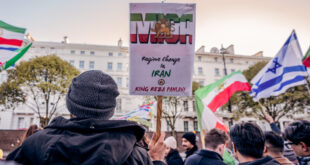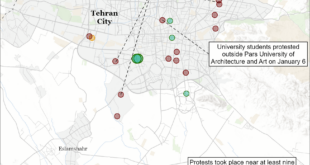 TEHRAN (FNA)- A looming global recession could make OPEC more tolerant of cheaper oil, but the group still needs to cut output by early next year to control swelling stocks and insure against a price collapse.
TEHRAN (FNA)- A looming global recession could make OPEC more tolerant of cheaper oil, but the group still needs to cut output by early next year to control swelling stocks and insure against a price collapse.
Already top exporter Saudi Arabia has begun to pare back production in line with expectations of lower demand, which last week pushed oil to a 13-month low below $80 a barrel, nearly 50 percent down from the July peak of $147.27 for US crude.
“‘What is the highest price the market can profitably pay?’ is the real question,” said Serene Gardiner of Standard Chartered Bank.
“Expectations of what oil producers can get for their oil have shifted along with events in the financial world. It’s bad for business to add oil to the fire, so to speak. And as such we have noticed a shift in rhetoric.”
Ahead of an emergency OPEC meeting called for Nov. 18, Standard Chartered Bank has said the level the exporters’ group would “vigorously defend” was $80 a barrel.
That chimes with an OPEC source, who said the Organization of the Petroleum Exporting Countries was unlikely to cut unless the price of crude produced by its members fell below $80 a barrel.
“The price is still reasonable,” the source told Reuters.
Saudi Arabia and other Persian Gulf producers can afford to be relatively relaxed. They have low production costs and can balance their budgets with oil at well below $60.
Others including Iran, Venezuela and Iraq need higher prices to meet major spending commitments. Adding to already hefty expenses, Iran has major development plans and Iraq is recovering from years of war.
Venezuela has the greatest needs of all OPEC members and would next year require an average price of $97 to balance its external accounts, according to Washington-based PFC Energy.
“I think we’re seeing a re-emergence of the doves and the hawks. Venezuela and Iran would like to see $100 or more and need it,” said David Kirsch, consultant at PFC.
“Doves would like to see a level of $90. The difference is that doves are aware that major economies need to enact fiscal and monetary stimuli.”
The categories of doves and hawks are disliked by many in OPEC, but are often used to distinguish between producers like Saudi Arabia, an ally of top consumer the United States, and hawks such as Venezuela and Iran that are more concerned about balancing their books than keeping the top energy user happy.
They are pumping close to capacity, are worried about the falling value of their earnings and think the onus should be on Saudi Arabia, the only OPEC member pumping significantly above its agreed output target, to lead any cuts in production.
At OPEC’s last meeting in September, Saudi Arabia, in a move some interpreted as an attempt to win unity ahead of challenging times, signed up to a tougher-than-expected deal.
The group said it would adhere strictly to targets, removing around 500,000 barrels per day pumped above an agreed ceiling.
Saudi Arabia has not commented publicly, but the Saudi-owned Al-Hayat newspaper reported after the September meeting the kingdom did not intend to cut output unless customer demand fell.
So far, it is still pumping above target, but reduced output in September to 9.55 million bpd, from 9.65 million bpd in August, according to a Reuters survey.
PFC has said the group would need to remove around one million bpd from the market by the second quarter of next year. Otherwise, it would face a stock build of between one and 1.5 million bpd in the second and third quarters, Kirsch said.
If the price slide accelerates, OPEC might be stung into further action even before November, but it could also wait until the next conference scheduled for December in Algeria.
“More important than changes to output at this point is the group’s demonstration of its determination to respond responsibly to changing economic conditions and avoid the mistakes of the Asian financial crisis when internal fighting among OPEC members helped to lead to the collapse of prices to $9 a barrel,” PFC Energy said in a note. After the Asian crisis in the late 1990s, poor OPEC discipline meant the group produced above agreed limits as demand fell sharply.
By the start of 2002, non-OPEC producers, including Russia, the second biggest exporter after Saudi Arabia, had agreed to collaborate with OPEC supply cuts to try to support prices.
In a sign of renewed closeness to the producer group, Russia sent its most senior delegation yet to observe the September meeting.
Apart from any political agenda, Russia needs an estimated $70 a barrel to balance its books, although it can draw on gold and foreign exchange reserves.
That still leaves the problem of Russian energy companies, whose stagnating output will decrease regardless of any OPEC decision unless they can meet capital expenditure needs.
Oil major LUKOIL’s chief executive told Reuters the firm’s output would only rise next year if prices held above $105.
 Eurasia Press & News
Eurasia Press & News



